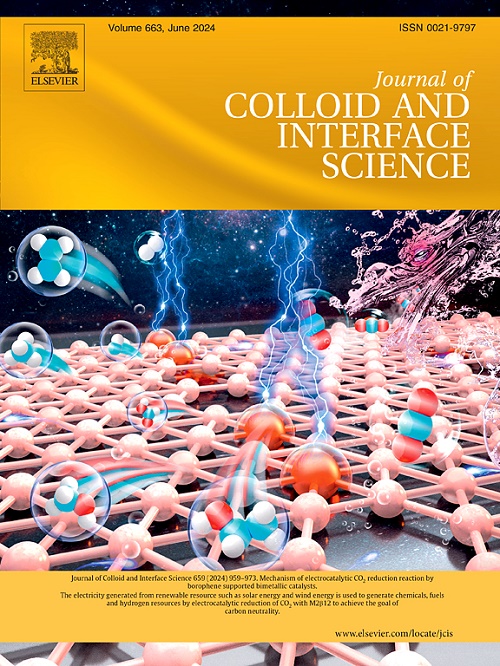The influence of P-toluenesulfonyl isocyanate on the solvation structure and solid electrolyte interphase formation on graphite anode under high temperatures
IF 9.4
1区 化学
Q1 CHEMISTRY, PHYSICAL
引用次数: 0
Abstract
The formation and stability of the solid electrolyte interphase (SEI) play a crucial role in determining the performance and lifespan of lithium-ion batteries (LIBs) at evaluated temperatures. Electrolyte additives have emerged as promising candidates for modulating the formation kinetics and stability of the SEI layer. In this study, molecular dynamics (MD) and ab initio molecular dynamics (AIMD) simulations were employed to investigate the influences of P-toluenesulfonyl isocyanate (PTSI) as an electrolyte additive in the LiPF6/EC/DMC electrolyte on the SEI formation process on the graphite anode under high temperatures. MD simulations revealed that PTSI induces modifications in the solvation structure, resulting in two ethylene carbonate (EC) and two dimethyl carbonate (DMC) molecules in the first solvation shell of Li+. Furthermore, the PTSI additive suppressed the decomposition of solvent molecules and PF6 anions in the LiPF6/EC/DMC/PTSI electrolyte under high temperatures according to the AIMD simulations, contributing to a more stable SEI layer. Moreover, this suppression can be attributed to the reduced reactivity of solvent molecules and salt anions, as evidenced by the enhanced bond strength and decreased bond length. These microscopic insights provide a multi-faceted understanding of the functionality of PTSI additives, facilitating the rational design of novel additives.
高温下对甲苯磺酸异氰酸酯对石墨阳极溶解结构和固体电解质相间形成的影响
固体电解质相间层(SEI)的形成和稳定性对锂离子电池(LIB)在评估温度下的性能和寿命起着至关重要的作用。电解质添加剂已成为调节 SEI 层形成动力学和稳定性的有前途的候选物质。本研究采用分子动力学(MD)和非线性分子动力学(AIMD)模拟来研究 LiPF6/EC/DMC 电解液中作为电解液添加剂的对甲苯磺酰基异氰酸酯(PTSI)对高温下石墨负极 SEI 形成过程的影响。MD 模拟显示,PTSI 引发了溶解结构的改变,导致 Li+ 的第一个溶解壳中出现了两个碳酸乙烯(EC)分子和两个碳酸二甲酯(DMC)分子。此外,根据 AIMD 模拟,在高温条件下,PTSI 添加剂抑制了 LiPF6/EC/DMC/PTSI 电解液中溶剂分子和 PF6 阴离子的分解,有助于形成更稳定的 SEI 层。此外,这种抑制作用可归因于溶剂分子和盐阴离子反应性的降低,这一点可从键强度的增强和键长的降低得到证明。这些微观见解提供了对 PTSI 添加剂功能的多方面理解,有助于新型添加剂的合理设计。
本文章由计算机程序翻译,如有差异,请以英文原文为准。
求助全文
约1分钟内获得全文
求助全文
来源期刊
CiteScore
16.10
自引率
7.10%
发文量
2568
审稿时长
2 months
期刊介绍:
The Journal of Colloid and Interface Science publishes original research findings on the fundamental principles of colloid and interface science, as well as innovative applications in various fields. The criteria for publication include impact, quality, novelty, and originality.
Emphasis:
The journal emphasizes fundamental scientific innovation within the following categories:
A.Colloidal Materials and Nanomaterials
B.Soft Colloidal and Self-Assembly Systems
C.Adsorption, Catalysis, and Electrochemistry
D.Interfacial Processes, Capillarity, and Wetting
E.Biomaterials and Nanomedicine
F.Energy Conversion and Storage, and Environmental Technologies

 求助内容:
求助内容: 应助结果提醒方式:
应助结果提醒方式:


